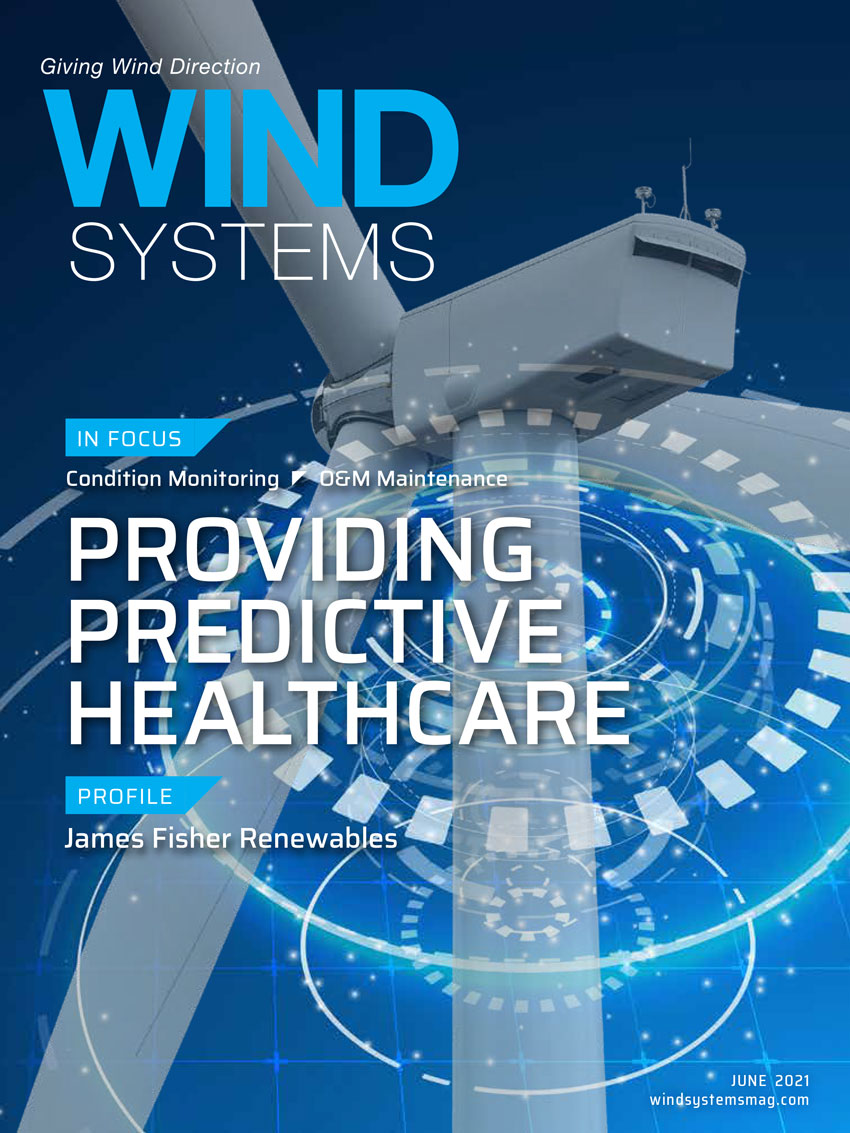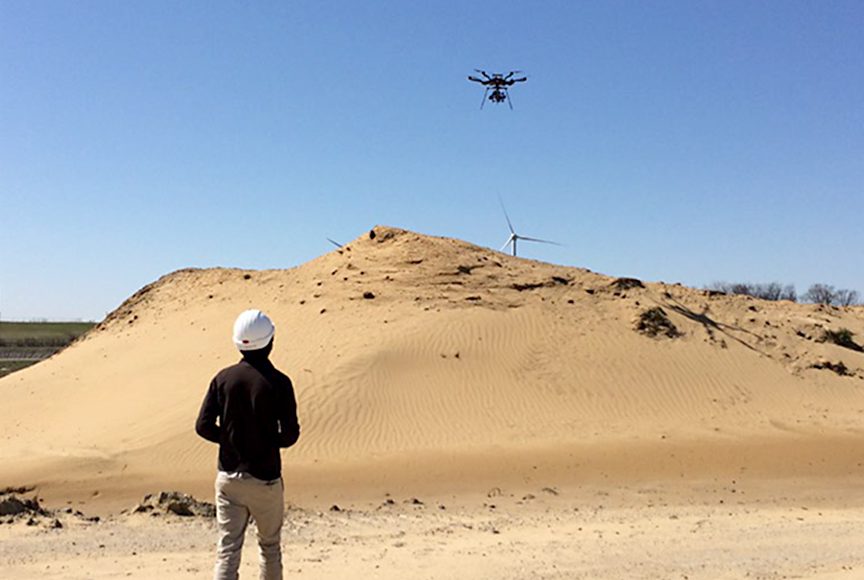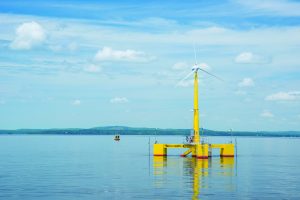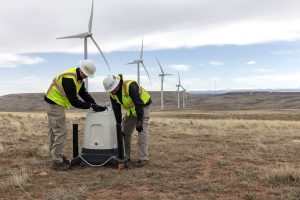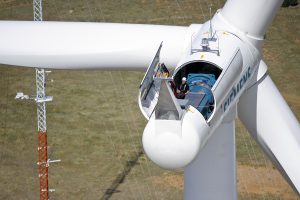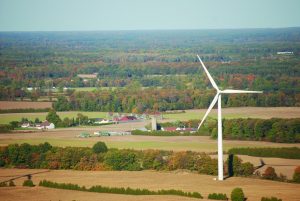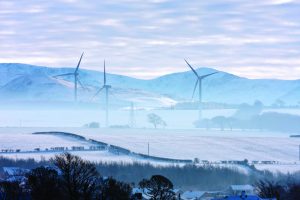The Brüel & Kjær Vibro (B&K Vibro) monitoring and diagnostic group plays a very special service role in the operation and maintenance of wind turbines. In close cooperation with the wind-farm owner/operators, it manages machine problems from even before any fault is detected, right up until after the faults are diagnosed and fixed. This article explains how the diagnostic group came to be, how it functions, and includes an interview with Christian B. Poulsen and Ivaylo Dragiev, two specialists from BKV, to show the personal side to this comprehensive and demanding task.
Wind energy, unlike thermal power stations, has no fuel expenses or water/air pollution treatment requirements, so maintenance is a primary-area focus that influences owner/operator profitability. This is reflected by the fact that all offshore and an increasing number of land-based wind turbines are equipped with monitoring systems as standard. Moreover, a large number of the new wind turbines begin their life under a two- to five-year warranty, where all monitoring and diagnostics are provided by the OEM as a turn-key service. No monitoring expertise is required from the owner/operator during this time. In fact, after the warranty, the customer has generally not gained sufficient expertise to do the monitoring by themselves, so they will often re-new the OEM service contract or find an independent service provider. Interestingly enough, the owner/operators typically never do their own monitoring and diagnostics, in order for them to focus on other pressing issues in running a wind farm.
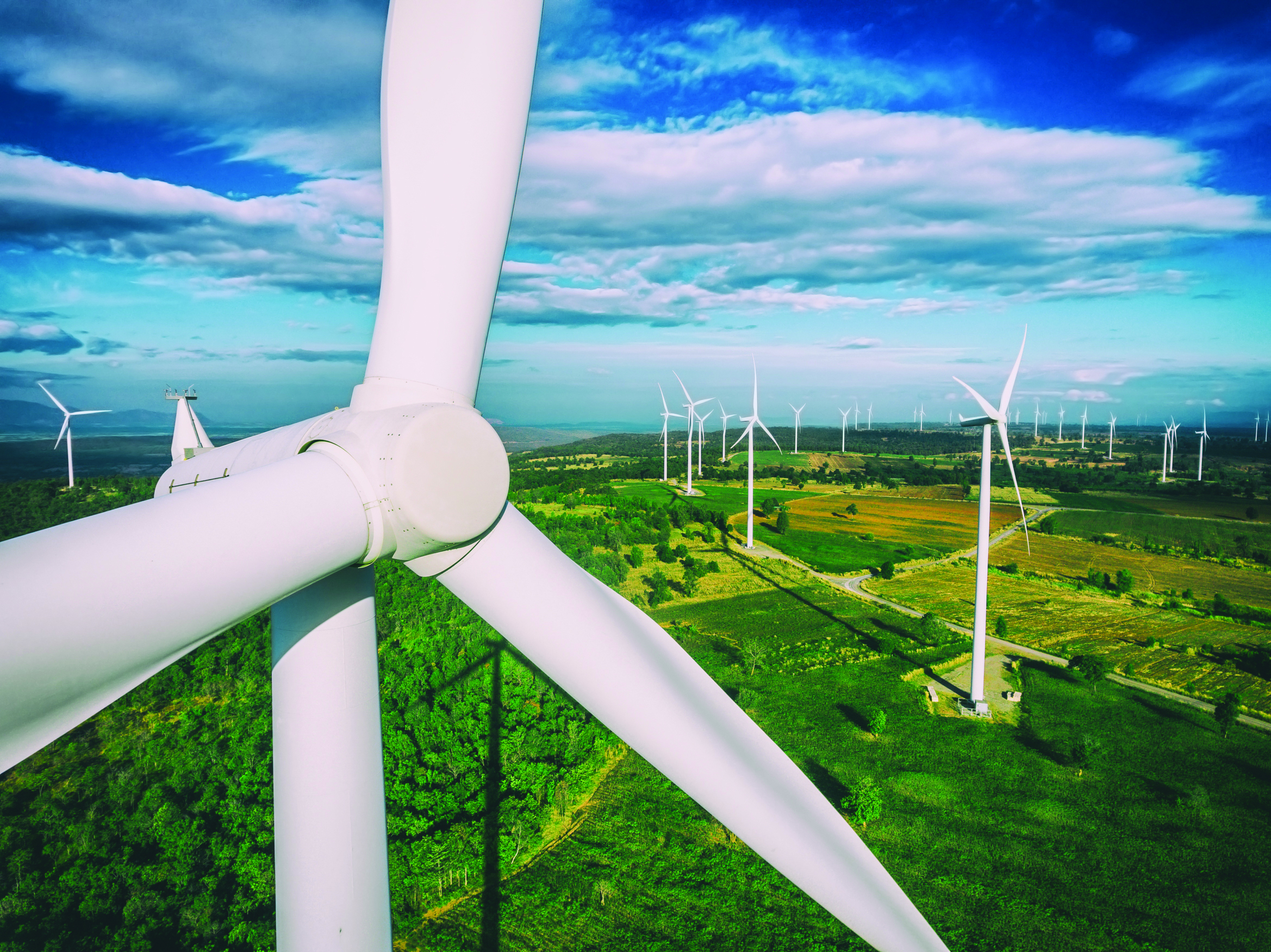
Pool of specialists offered as a service
Traditionally, long before the wind-power industry was born, many industries had a team of diagnostic specialists looking after the machines in their plant all the time. As the condition monitoring systems at the time were more or less “data pumps” that basically just provided pre-configured spectrum plots and alarms based on overall vibration measurements, there was a lot of diagnostic work that was needed to be done to interpret this data, so they were kept busy.
Things have changed, though. The newer systems provide descriptor measurements, based on narrowband fault frequencies and statistical analyses, which give much earlier fault-detection capability than overall vibration measurements, and provided basic diagnostic information once the fault was detected. Instead of just providing plots based on a fixed configuration, the newer systems store raw data with post-processing capability, so the user can do user-defined diagnostics and analyses themselves with much more flexibility, reliability, and accuracy. Even automatic diagnostics are offered by the new systems.
At the time when the wind-power industry took off, all of this new monitoring-system functionality significantly reduced the work load of the wind-farm diagnostician, so it was hard to justify having a full-time specialist on board for the smaller wind farms. Although their work load was reduced, it is important to stress that the new monitoring systems could in no way replace the specialist’s skills and experience.
There are still a number of decisions that have to be made that can’t be done by the monitoring systems, such as evaluating the severity of the fault and how to react to it, evaluating several faults simultaneously, or how to take into account unexpected anomalies.
The OEM service contracts relieved this problem by using a team of specialists to look at thousands of wind turbines as part of the warranty. Independent service providers did the same. They both offered a turn-key monitoring and diagnostic service where nearly everything concerning machine healthcare is done for many owner/operators — from fault detection to actionable diagnostics.
Even the monitoring system IT issues are taken over by the service providers, where data storage, updating and maintenance of the data servers and monitoring systems is taken care of.
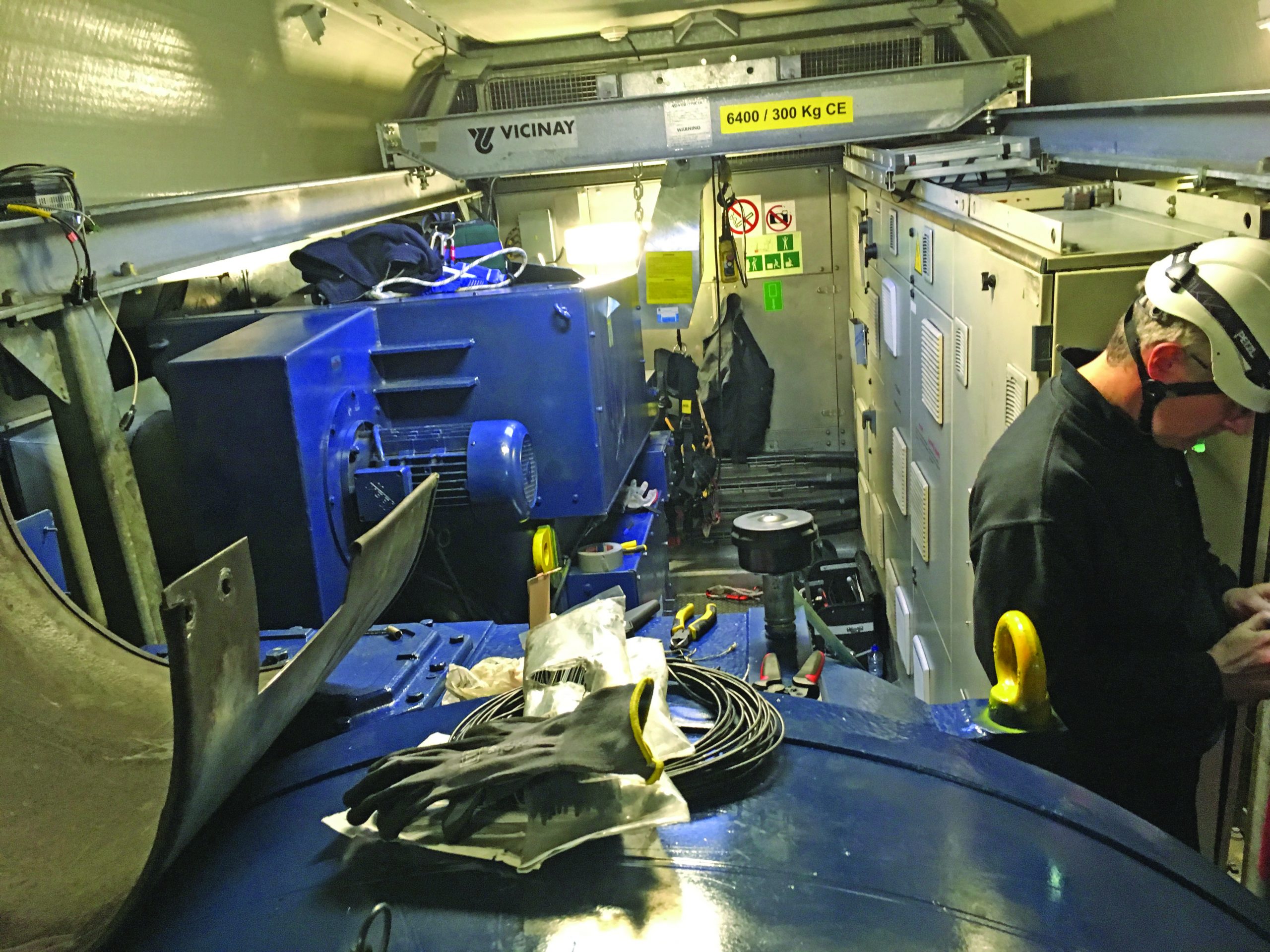
BKV monitoring and diagnostic group
The BKV diagnostic group works with both the OEM during the warranty period as well as with owner/operators after the warranty. They are also service providers for wind turbines that are retrofit with monitoring systems.
Christian B. Poulsen and Ivaylo Dragiev recently were interviewed on a busy day in the remote monitoring office of BKV in Nærum, Denmark, where they discussed their daily duties as specialists.
Christian, tell us a little about the group and explain why this service is so important for the wind industry.
Poulsen: We are a very dedicated team of full-time specialists, all with a passion for providing predictive healthcare for many different types of turbines and customers. Ivaylo and I, together with others, are located in the B&K Vibro monitoring and diagnostic service center in Denmark, but we also have service centers in the U.S. and China. Our overall objective is actually very simple: to constantly monitor the condition of the drive train and nearby components of thousands of wind turbines worldwide in order to optimize turbine uptime and reduce maintenance costs. This is done by giving simple, precise, and conclusive warning and advice to the wind-turbine operators and owners in good time so the appropriate maintenance action can be taken to keep the turbines running. Our comprehensive system of severity warnings — early-, mid-, and late-stage warnings — enable the customer to plan optimal maintenance ahead of time, while ensuring the best possible lifetime utilization of individual components. In addition to this, we provide close communications and support to the customers throughout all monitoring phases, making both our job and the customers’ jobs easier, fulfilling all mutual expectations, and we are prepared to provide specialized help when needed.
The group has been monitoring wind turbines for 16 years now. How much data do you have now, and can you tell us what is in the data?
Poulsen: We host and keep all data that we monitor, both vibration and the available process data. Currently we have many terabytes of stored data, which includes both scalar values, which are a single measured or calculated value in time, and time waveforms, which would typically be complex raw vibration data. This gives us the opportunity to see long-term development of mechanical faults as well as for testing and optimizing new measurement techniques and monitoring strategies. Because we have so much data, we are in a good position for performing “big data” statistical analysis across various platform types and operating conditions for gaining insight in predicted remaining useful life of components, evaluating component performance under different conditions, and revealing completely new vibration patterns for many kinds of faults.
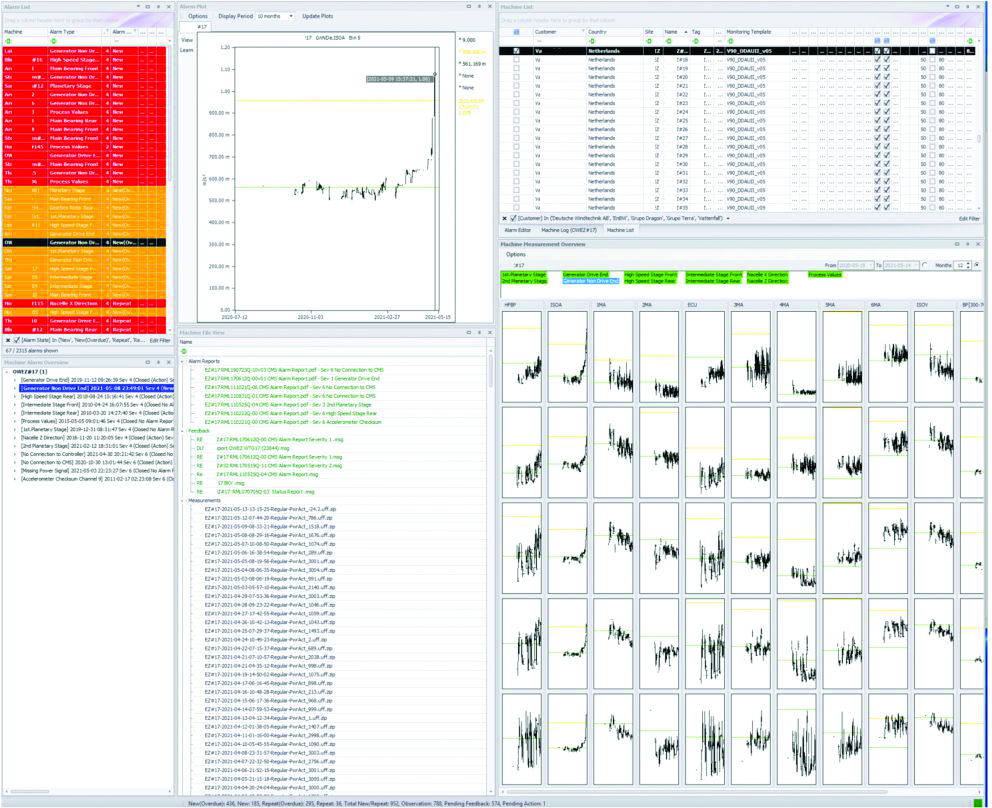
You obviously get a deep-dive insight in wind-turbine machine faults; do you share this expertise with the rest of the company, with the wind-turbine manufacturers, and with the component manufacturers?
Poulsen: We have a lot of meetings with both customers and OEMs, and part of that is to ensure that the results from our monitoring strategy, monitoring system technology, services and monitoring techniques — also called descriptors — are as expected. Much of our monitoring technology is proprietary, but the results are made to be accurately and reliably measurable, transparent, understood, and verifiable. With customer and OEM input, this makes it easier for us to optimize and improve our monitoring solutions. Often, we have daily communications with wind-farm managers, so our monitoring service becomes more “alive,” and they see us as a vital part of their daily planning. This ultimately contributes to getting maximum life out of the individual drive train components of each wind turbine, thus improving the levelized cost of electricity produced by the individual wind turbines as well as optimizing performance for the entire wind farm.
And the knowledge we gain from seeing many machine faults under a wide range of operating conditions is channeled into our Innovation & Development team, so new descriptors and monitoring technology can be developed into our new products to better serve the wind-farm owners and operators.
Do you get requests from customers to look into the data?
Poulsen: Special requests for customized tasks are also part of our job. It can be an independent investigation into the mechanical condition of a turbine that is out of warranty, or it could be a request for focused analysis on a specific wind farm or platform type to get a better insight from the field. These special tasks give good value to the customer while, at the same time, enable us to extend the scope and bandwidth of our monitoring services to serve more.
Ivaylo, what does it take to be a diagnostic specialist?
Dragiev: It takes a broad range of skills. Usually a diagnostic specialist will have an academic background as a mechanical, acoustic, or electrical engineer on which basis he/she later would take additionally some specialized vibration certification courses.
Aside from that, it requires a very good machine and failure mode knowledge, which would help correlating the vibration data with the machine’s condition. An important part of the diagnostic specialist daily routine is communication with the customers, who usually provide very good feedback, which is later used to fine tune the descriptors, the alarm levels, and even the sensor layouts if needed.
It is important that the diagnostics are very focused on the task he/she is performing, especially when it comes to in-depth analysis, because sometimes the small details matter a lot when it comes to what is delivered to our customers. Thinking out-of-the-box is a “must” for the diagnostic specialist, too.
Can you tell us the life story of a typical machine fault and what role you play in it?
Poulsen: The typical scenario begins with the very early detection of a drive train fault, which is then followed by a series of B&K Vibro alarm reports. These are issued in pace with the increasing severity levels of the fault and a decreasing lead time to failure over a period of say six to 18 months. The alarm report concisely explains the type and location of the fault and gives a clear indication of future recommended actions together with an estimated timeslot. In most cases, as the severity level increases, the customer dialogue also increases in order to accurately update the right planned maintenance at the right time. When the on-site maintenance work is finished, we will re-evaluate the mechanical condition of the component and inform the customer accordingly. If everything is OK, we will then re-start the normal monitoring period again.
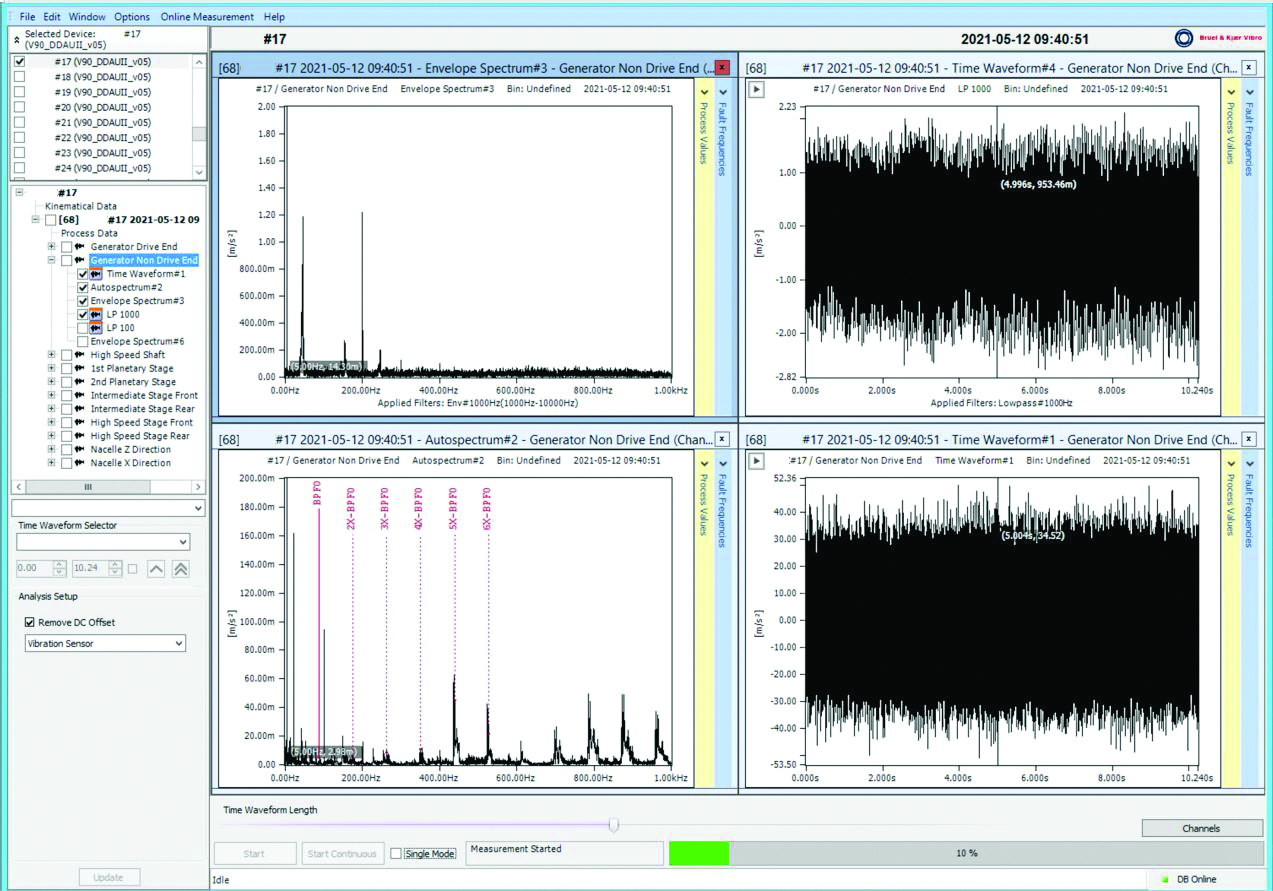
Is there a difference in the customers, as far as dialogue, action, expertise, expectations, etc.?
Poulsen: Over the last 10 years, we have experienced that customers are much more knowledgeable with respect to insights toward condition monitoring and optimization of turbine maintenance. This has challenged us positively and supported us in developing new, better, faster methods of condition monitoring of wind turbines.
Dragiev: There is a big variety of customers, and many of them run their own preventive maintenance strategies. Depending on the location of the wind farm and the service organization taking care of the planned maintenance, some customers would require that we provide the earliest possible warning about a potential defect, while others would rather act at a later stage of development. Additionally, most of the so-called utility customers have their own diagnostic groups, which we also support as a second-level support or with different troubleshooting activities. Other customers would purely rely on B&K Vibro’s experts to monitor their assets and prepare their maintenance schedules.
What are some of the challenging moments in your job, and what are some of the rewarding times?
Poulsen: Customers are becoming more knowledgeable, therefore, more interested in our diagnostic approach. This is actually helpful because we get a better understanding of the customer’s perspective. And it is not just monitoring individual turbines but a fleet of them for fine-tuning the maintenance strategy. Another challenge is the continuous development of wind-turbine technology, turbine types, and drive-train configuration. This requires us to continuously upgrade our monitoring strategy to still deliver optimal wind turbine performance.
Some of the most rewarding situations are when we are closely trending a late stage component fault, and we work closely with the maintenance crew for planning an optimal shutdown. This means we succeed in getting maximum life out of the component based on our diagnostic predictions without unnecessary downtime or maintenance expense based on the capacity and ability of the maintenance crew. This is a cooperative effort, and again, this is doing “the right service at the right time.”
Dragiev: Some of the challenges we have faced are related to accurately defining the remaining useful lifetime of the components, which requires taking into account multiple factors, not just the vibration data. I could describe this as a constantly evolving process in which B&K Vibro’s diagnostic group is getting better and better day by day.
When it comes to rewarding situations, I could mention the thankful emails we get from customers where they praise the accurate diagnoses we made or their insistence to continue with their B&K Vibro monitoring contract, such as for assets about to come under their operation. I would also mention the satisfaction we get when we deliver training sessions to our customers, where we can see how much knowledge they gained and how much they really appreciate the value of the online condition monitoring system.
What lies ahead in the future?
Poulsen: In addition to the continuous optimization of our monitoring strategy as experience is gained, we will also extend our monitoring strategy to include wind-turbine components other than just the drive train. We will also extend our holistic monitoring approach by incorporating other monitoring sensor techniques, so we can monitor for more potential failure modes. We also plan to implement more data science in our diagnostic approach. All of this will lead to even more machine uptime, more focused maintenance, and a better prediction of wind-turbine component remaining life.
Dragiev: Over the course of the last couple of years, we all have been reading about data science, AI, and machine learning coming into our daily lives, so in our field of work, this is not an exception. We are expecting certain human tasks to be automated, which would enhance the work of the diagnostic engineer and would allow him/her to focus in areas that haven’t been explored yet and to be more efficient in general.
Optimal wind farm health
A day in the life of a B&K Vibro diagnostic specialist is not just looking at the data and informing the customer of anomalies by showing a vibration plot. The wind-farm owners and operators, as well as the OEMs, have many challenges and must make operation and maintenance decisions constantly, sometimes almost on a daily basis. This requires much more than looking at a vibration plot. The expertise from the full-time diagnostic specialists coupled together with the expertise from the maintenance crew results in optimal healthcare for the entire wind farm. In addition to the diagnostic specialist’s expertise, the specialist also has access to data tools and a vast amount of data — not only from the machine in question but also historical data from similar machines elsewhere — thus ensuring effective, reliable operation, and maintenance of the turbine in question as well the entire wind farm.
Christian B. Poulsen is the Global Team Lead in B&K Vibro’s Wind Service Group, in Denmark. He has been with the company for 12 years, joining as a diagnostic engineer in 2009. Today he is responsible for worldwide diagnostic service and project handling within condition monitoring of wind turbines.
Ivaylo Dragiev is the Technical Lead/Diagnostics for the Wind Service Group at B&K Vibro, based in the Denmark office. He has been with the company for seven years, and is skilled in condition monitoring of wind turbines, gearboxes, generators and other types of rotating and auxiliary equipment. He is responsible for the creation and modeling of new monitoring templates, executing data analysis and optimizing existing tools and applications.
















